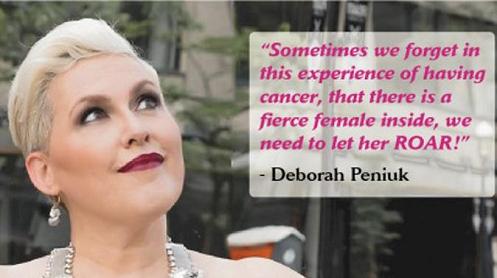
Triple Negative Breast Cancer Day by Deborah – after BREAST CANCER ambassador.
Being diagnosed with breast cancer has been one of the most challenging things to live with to date but knowing that Breast cancer isn’t just one type of cancer is something everyone should know. There are four main subtypes of breast cancer, with different characteristics, and therefore which require different treatments.
Each year 15 to 20 per cent of patients get diagnosed with Triple-negative breast cancer – it is named this because it lacks estrogen, progesterone, and HER2 receptors – it accounts for only 10 to 20 per cent of all invasive breast cancers, yet is responsible for a large proportion of breast cancer deaths because it is so aggressive, and is more likely to have already spread to other parts of the body at diagnosis.
Fortunately, Triple-negative breast cancer can be treated with other drugs, such as chemotherapy, radiation therapy and non-HER2 targeted therapy.
Most of us go through chemotherapy, surgery and radiation therapy. I’ve had all 3 with 8 rounds of chemo, 2 major surgeries including Lumpectomy and Lymph Node Dissection and Breast Reconstruction.
Some TNBC factoids:
- Tends to be more aggressive than other types of breast cancer: Studies have shown that triple-negative breast cancer is more likely to spread beyond the breast and more likely to recur (come back) after treatment. These risks appear to be greatest in the first few years after treatment. As years go by, the risks of the triple-negative breast cancer recurring become similar to those risk levels for other types of breast cancer. Five-year survival rates also tend to be lower for triple-negative breast cancer. A 2007 study of more than 50,000 women with all stages of breast cancer found that 77% of women with triple-negative breast cancer survived at least 5 years, versus 93% of women with other types of breast cancer. Another study of more than 1,600 women published in 2007 found that women with triple-negative breast cancer had a higher risk of death within 5 years of diagnosis, but not after that time period. The recurrence and survival figures in these and other studies are averages for all women with triple-negative breast cancer. Factors such as the grade and stage of the breast cancer will influence an individual woman’s prognosis.
- Researchers are working to find the best approaches to treating triple-negative breast cancer. Some clinical trials are comparing the effectiveness of various older and newer chemotherapy medications, used in different combinations, for treating triple-negative breast cancer.
- Other clinical trials are trying to find out whether some targeted therapies are effective against triple-negative breast cancer.
- Anyone can get triple-negative breast cancer. However, researchers have found that it is more likely to affect:
- Younger people. Triple-negative breast cancer is more likely to occur before age 40 or 50, versus age 60 or older, which is more typical for other breast cancer types.
- African-American and Hispanic women. Triple-negative breast cancer most commonly affects African-American women, followed by Hispanic women. Asian women and non-Hispanic white women are less likely to develop this type of cancer. A study found that black women were 3 times more likely to develop triple-negative breast cancer than white women.
- People with a BRCA1 mutation. When people with an inherited BRCA1 mutation develop breast cancer, especially before age 50, it is usually found to be triple-negative.
- Tends to be higher grade than other types of breast cancer. The higher the grade, the less the cancer cells resemble normal, healthy breast cells in their appearance and growth patterns. On a scale of 1 to 3, triple-negative breast cancer often is grade 3.
- Usually is a cell type called “basal-like.” “Basal-like” means that the cells resemble the basal cells that line the breast ducts. This is a new subtype of breast cancer that researchers have identified using gene analysis technology. Like other types of breast cancer, basal-like cancers can be linked to family history, or they can happen without any apparent family link. Basal-like cancers tend to be more aggressive, higher grade cancers — just like triple-negative breast cancers. It’s believed that most triple-negative breast cancers are of the basal-like cell type.
For women in Ontario, breast cancer is the most frequently diagnosed type of cancer.
In 2017: An estimated 10,100 women will have been diagnosed with breast cancer.
In 2017: An estimated 1,900 women will have died of breast cancer.
The above figures are taken from Canadian Cancer Statistics 2017. Read more: http://www.cancer.ca/en/cancer-information/cancer-101/canadian-cancer-statistics-publication/?region=on#ixzz58Gufdj7A
Allow yourself to be loved, know your body, get yourself checked. Take care of the organic machine that your body is…feed it with good healthy things. DIET, EXERCISE and ATTITUDE.
Spread the word – The more patient navigators and clinicians that know about our work, the more patients will be told about TNBCF at their point of diagnosis is when we can help them the most.